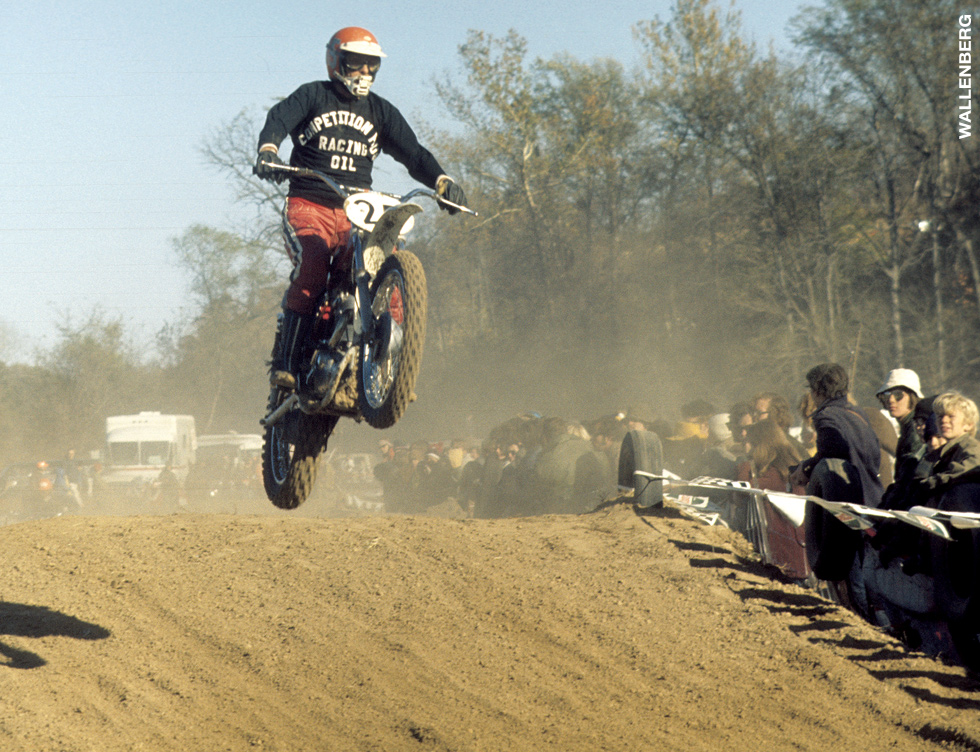


ick Mann was just a few weeks shy of his 38th birthday when he signed up for the AMA Pro Motocross National at the Cal-Expo outside of Sacramento. (This wasn’t the Hangtown Motocross Classic—Hangtown wasn’t on the AMA schedule as a national until 1974, even though it was arguably the biggest motocross race in America at that point.) The promoter of the event was Leisuretech, headed by a rock ‘n’ roll promoter named Michael Goodwin, and not only was it a part of the nascent AMA series, it was part of his own three-race U.S. National Cup Series, which would also include stops at Saddleback and Carlsbad. For Mann, this would be the one and only AMA Pro Motocross National he would ever enter.


In the twilight of his career, the super versatile Mann was approached by the promoter Goodwin about participating in this new motocross series. After all, with the possible exception of Malcolm Smith, Mann was the most famous active racer in American motorcycling. He had some motocross experience, having competed from time to time in Edison Dye’s Inter-Am Series. He was also an advocate for this new racing discipline, warning the American Motorcyclist Association (AMA) as early as 1968 that they needed to begin sanctioning motocross races and issuing licenses. (He was even suspended by the AMA at one point for doing non-sanctioned MX races.) So it was a big deal that Mann signed up for the Cal-Expo AMA Pro Motocross. The fact that he entered on a British-made BSA, once a top brand in Grand Prix motocross but by now a relic compared to the purpose-built dirt bikes coming from Japan and Sweden, made it all the more interesting.
On that day in May of ’72 it was more than 100 degrees in Sacramento and a complete dustbowl. The halftime show was Super Joe Einhorn attempting to jump 14 cars, but he miscalculated the distance and over-jumped his landing ramp. His front wheel exploded upon impact, 141 feet from takeoff. He went over the bars and was lucky to walk away with a broken collarbone.
Mann entered the 250 class, and he found the going difficult on the tight, rough, and dusty course. He finished outside the top ten in all three motos, going 14th overall on the day—not bad for a man twice the age of most of his competitors! The Cal-Expo 250 class was won by Husqvarna’s Gunnar Lindstrom, while “Bad” Brad Lackey topped the 500 class aboard a prototype Kawasaki.
The next weekend, while the motocrossers were all at Saddleback Park in Southern California, Mann strapped on his metal shoe, got back on his kitted 750 BSA, and went back to flat track racing, finishing third in the San Jose Mile.
All told, Dick Mann raced in more than 230 AMA races, including that one AMA Pro Motocross race in 1972 at the Cal-Expo. If there was ever really any question as to whether or not Mann was the most versatile American motorcycle rider of all time, in 1975, well past his 40th birthday, he entered what was then known as the International Six Days Trial (now the ISDE), which was being held on the Isle of Man, and the fast old man earned a bronze medal. ![]()

